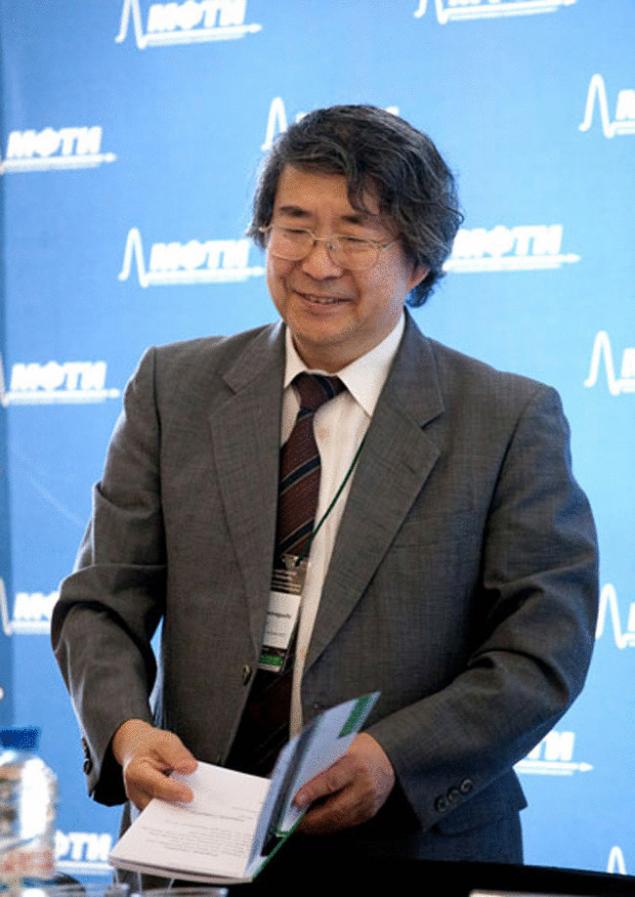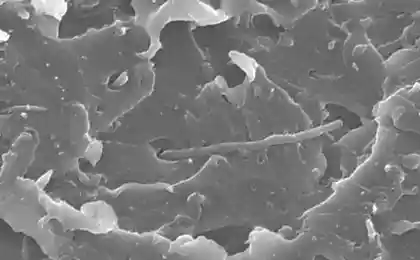415
Oscillating polymers

Artificial polymer can be forced periodically to expand and contract with the oscillatory chemical reactions.
Japanese researcher Takahiro Yamaguchi from the Institute of research of nanosystems at the Tokyo National Institute of engineering (Nanosystem Research Institute National Institute of Advanced Industrial Science and Technology — AIST) has developed a biopolymer material, which is able to contract rhythmically due to it occurring in the oscillatory chemical reactions. The main feature of such reactions in a cyclic variation of the parameters: for example, over time the color of the solution can be periodically then blue, then red. Similarly, can change temperature, concentration of substances, etc.
The first reaction of this kind was opened in 1951 by the Soviet biochemist Boris Belousov, observing the cyclic change in color the oxidation of citric acid by potassium bromate, cerium ions as a catalyst. Cerium ions are periodically oxidized and restored, causing the reaction mixture to change color. The mechanism of the process and its mathematical model ten years later was described by Anatoly Zhabotinsky.
Later were found and other reactions, whose parameters are periodically varied due to own internal processes, and chemical system. They all unite under the common name of the reaction of Belousov-Zhabotinsky. Chemical self-oscillatory processes have become one of the most popular research objects: they can be used to study the behavior of complex oscillatory processes, which can be found in chemistry and in physics and in biology. Results Takahiro Yamaguchi is an example of how chemical oscillations can be adapted to meet not only fundamental, but also practical problems.
When we speak of rhythmic contractions in the first place come to mind muscles, but in this case, the polymer system is reduced not as muscular tissue. The biopolymer is first uniformly expanding in all directions, and then evenly compressed, no preference in the direction of contraction, as in muscle cells, is not here. One cycle takes several seconds, and the total duration of reductions may reach several days. "Engine" is a chemical process from a class of reactions of the Belousov-Zhabotinsky, only in this case, the reaction is changes in color or temperature happen to compression and expansion of the material.
A Japanese scientist said that the basis of the new material and used reagents are non-toxic, which means that this self-oscillating polymer can be used in medicine. He suggests that development will be useful for the development of microscopic devices, so called lab-on-chip (full chip analysis – micro instruments which allow to carry out one or more biochemical processes on a single chip measuring a few square millimeters). Thus, the chemical process, the former "idle pastime" of young chemists (Belousov-Zhabotinsky reaction is a common theme in chemical contests and tournaments, students) can get a real practical application.
About your development Yamaguchi reported at a major international conference ICENET-2014: "Instability in excitable media and management options", which was held at MIPT on may 28-30, 2014 and was devoted to Biophysics of the heart muscle and other excitable tissues.
Source: nkj.ru























